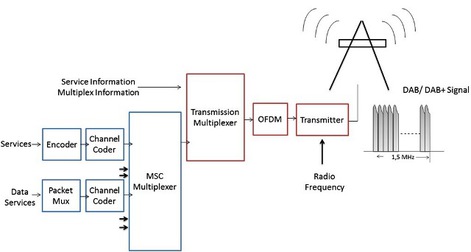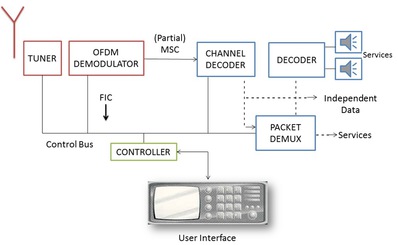How DAB works
Generation of the DAB Signal
Each service signal is coded individually at source level, error protected and time interleaved in the channel coder. The services are then multiplexed in the Main Service Channel (MSC), according to a pre-determined, but adjustable, multiplex configuration. The multiplexer output is combined with Multiplex Control and Service information, which travel in the fast Information Channel (FIC), to form the transmission frames in the Transmission Multiplexer. Finally, Orthogonal Frequency Division Multiplexing (OFDM) is applied to shape the DAB signal, which consists of a large number of carriers. The signal is then transposed to the appropriate radio frequency band, amplified and transmitted.

Fig.1: Generation of DAB Signal
Reception of a DAB signal
The DAB ensemble is selected in the analogue tuner., the digitised output of which is fed to the OFDM demodulator and channel decoder to eliminate transmission errors. The information contained in the FIC is passed to the user interface for service selection and is used to set the receiver appropriately. The MSC data is further processed in an audio decoder to produce the left and right audio signals or in a data decoder (Packet Demux) as appropriate.

Fig 2. Conceptual DAB Receiver
